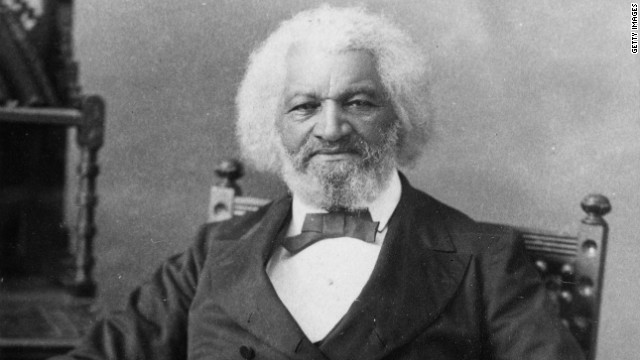Recovery Coaches and Sober Companions* are in the news lately because of a recent article in the New York Times and the fact that Toronto Mayor Rob Ford has a sober companion. One of the key concerns regarding recovery coaches is that they are not required to have any education, training or licensing (it is harder to cut hair or do nails than it is to be a recovery coach). The article from the July 11, 2014 NY Times described how wealthy New York women that struggled with addiction were employing recovery coaches:
“You get over one thing and you get slammed with something else,” said Ms. Mellon, 47, looking slinky in a crisp white blazer, a high-slit skirt and gladiator sandals. She recalled some of the ordeals: her father’s death, two hostile takeover attempts, taking her mother to court. “It’s a miracle I’m still here,” she said. Her secret to staying sober through it all? Ms. Mellon enlisted the aid of a recovery coach, Martin Freeman, a London-based psychotherapist.
Ms. Mellon’s recovery coach is a psychotherapist (the article does not mention if he is licensed in New York state though). Most recovery coaches are unlicensed and either shoddily or completely untrained. One doesn’t need a license to be a recovery coach; they don’t even need a certification. A person can get a certification in New York state quite easily. To get the certification, one doesn’t have to have a license, or a college degree, or any work experience. A person needs only take 60 hours of training (a week and a half of classes) and to pass a test. The more serious professions require significant levels of education, intense trainings, difficult tests and then lengthy licensure requirements (medicine, law, accounting, counseling, teaching, engineering, plumbing). These barriers to entry keep the fly-by-night charlatans out of those fields as much as possible and also serve to protect the public. The lack of a barrier means that almost anyone can be a recovery coach and that it is difficult for consumers to find viable help. There are websites and organizations springing up to offer credentials in recovery coaching in order to give them the appearance of legitimacy. Here is one of them; it’s clearly not Mensa.
Let’s return to the NY Times article and Ms. Mellon:
“He’s the most enduring relationship I’ve had,” said Ms. Mellon, who keeps her sobriety coach on a retainer to ensure he will be there for morning chat sessions and late-night calls and to accompany her to stressful events. “I’m his one and only.”
There are a few causes of concern here:
(1) how often are these morning chat sessions and late-night calls and how much do they cost?
(2) “the most enduring relationship I’ve had” is an worrisome statement – people in recovery often have poor boundaries and struggle with relationships
(3) “I’m his one and only.” What happens if that recovery coach moved? Or if the coach took on another client? Would Ms. Mellon get angry? Feel hurt? Relapse? Because recovery coaching is unlicensed and unregulated, they are not held to the same standards that psychologists, social workers, licensed drug & alcohol counselors or licensed professional counselors are.
More grist for the mill from the Times:
“Addiction is a disease of isolation,” added Ms. Karr, 59, who has a 28-year-old son (she starts “Lit” with an open letter to him). “I would have loved to have someone come over and help me not get drunk.” It’s not just the extra glasses of pinot or rosé. Cosmopolitan mothers these days are also reaching for Adderall (the multitasker’s best friend), Percocet (the antidote to the taxing trifecta of marriage, children and career) and Ambien (that bedtime staple), not to mention a cocktail of other drugs that high-strung mothers also have at their disposal. And by the time these mothers realize they need help, they don’t exactly have the time or wherewithal to check into rehab or attend 12-step meetings. In addition, they want more privacy, the better to avoid the judgment and stigma that mothers with addiction face.
In addition to alcohol, people are addicted to stimulants, painkillers, sedatives and tranquilizers. They need professional help, not para- or quasi-professional help. Another concern is the line “they don’t exactly have the time or wherewithal to check into rehab or attend 12-step meetings.” It is that kind of self-absorption and denial that makes them a high risk to relapse. If you are addicted, you should go get professional help and probably should enroll in an in-patient or out-patient treatment program. “Who has time for treatment?” is akin to the following ridiculous questions: who has time to sleep, eat, exercise, save money, or engage in other behaviors that increase our health and longevity.
Back to the Times article and Ms. Powers, an untrained, unlicensed recovery coach:
Ms. Powers, 53, a former heroin addict, was an art director at Area, a prominent nightclub in New York during the 1980s, before moving to Los Angeles to get clean. She joined Narcotics Anonymous, where she became a sponsor to help fellow addicts through the program. These days, when she’s not on a tour bus with a rock-star client or on a film set with an actor, Ms. Powers rides her bike from Wall Street to Carnegie Hill, where she weans mothers from Vicodin or Klonopin.
“They’re starved for companionship,” Ms. Powers said. “Today’s pill-popping moms are a far cry from the bored, suburban housewives of ‘The Valley of the Dolls.’ They’re taking opioids, which are dangerously addictive. If you’re trying to withdraw from OxyContin, a doctor might prescribe Suboxone, which is even harder to kick than heroin.”
So we have unlicensed, untrained professionals helping people get off of dangerous drugs and charging money for it. Ms. Powers heart is probably in the right place, and she appears to have had a few success stories. But her dismissal of Suboxone, which is a legitimate medication assisted therapy (MAT), is unfortunately fairly typical of a number of people in 12-step programs. Claiming to be a recovery coach and charging money for her work gives Ms. Power’s medieval views an ill-earned sense of legitimacy. This is a problem.
Rob Ford made international headlines last year as the crack smoking mayor of Toronto. After a series of escalating episodes, Mayor Ford recently went away to rehab for two months. Upon his return to work, he announced that he had a recovery coach, Robert Marier. Mr. Marier is a self-identified former crack addict with a lengthy legal history who claims to be sober for the last 10 years. This is from the July 14, 2014 Toronto Globe and Mail:
Mr. Marier has no formal clinical training, instead using his own experience – a “been there, done that” attitude – when working with clients. Working through a company that hires him out, he said he’s helped hundreds of clients in the five years he’s been coaching.
I hope people are picking up on the theme here: unlicensed and untrained individuals that work with people with addictions and claim to have helped hundreds of people. How do they measure success? Do they keep data? Do they engage in supervision, where they discuss their clients’ issues with other recovery coaches? Are there quality of care reviews? I expect the answer to all of these questions are either “not applicable” or “no” or “no comment.” More on Mr. Marier:
Donny M., a recovering cocaine addict who asked that his last name be withheld, credits Mr. Marier for saving his life. The 24-year-old had seen Mr. Marier around in AA meetings, but in 2010 he was surprised (and irritated) when the grey-haired man approached him in a McDonald’s restaurant.
“He just came up to me and asked me about cleaning my apartment and stuff like that – ‘did you make your bed this morning?’” Donny said. “It’s a Bob thing … addicts, we think we’re too good to do the things that normal people do. We think we’re above it,” he said. Over the next four years, Mr. Marier became Donny’s AA sponsor, showing up at 8 a.m. every Saturday morning to drive him to meetings.
Mr. Marier is both a sponsor and recovery coach; the lines are blurred. I have no doubt that Donny has found Mr. Marrier to be helpful and supportive and that Donny’s life is better for it. But it seems that his life is better because he went to AA and got Mr. Marier as a sponsor…unless Mr. Marier charged Donny money for his efforts. Legitimate professionals do not approach people at McDonald’s looking for work or to haggle them (car salesman and Jehovah’s Witnesses do, but let’s give some respect to the word legitimate). Mayor Ford’s sobriety coach is alleged to have kicked a protester while the mayor was holding a press conference last week. Mr. Marier denies this: “It didn’t happen. We touched each other. It was a grazing, and there was no kicking motion. Absolutely none.”
Why Sober Coaches Earn $1000 A Day was published on thefix.com a few years ago. A couple of different high paid recovery coaches talked about the problems with recovery coaching. One of them is Ms. Powers, who apparently is one of the stars of the field and a media darling.
Unfortunately sober coaches can become as much of a crutch for some clients as the drinking and drugging once was. The onus is on the companion to maintain healthy boundaries and an appropriate degree of professionalism—a dangerous position, given how many hustlers there are in the game. Schrank notes that the business isn’t regulated in any way: “There are no professional associations or standards of practice,” he says. “So you have a lot of charlatans in this game.”
Powers admits that some sober companions have dubious qualifications for the job. “You are a sober coach if you say you are, so what does that mean?” she asks. “It means there will be people with a good sales pitch and a gift for hustlers using therapeutic jargon—people who may not really be in recovery—selling themselves as sober coaches. If someone is looking for a sober coach, I’d tell them to really take time to interview several candidates, or better yet, have their therapist speak to them before arriving at a decision.”
There is a company called Sober Champion which has a nice website and attempts to explain what sober coaches and sober companions are and are not, but they still have pretty lax requirements. They advertise that they will “accommodate your lifestyle” and help you “Stay out of jail!”
There was a great article on thefix.com titled I was a paid celebrity sober companion. The author talks about how he was flown out to LA to help out a celebrity for $600 a day. He felt out of place and ran into all kinds of problems because of the celebrity’s status and money. He discovered that he could help the celebrity by coercing him to go to 12-step meetings and getting him to open up during long talks. Eventually, the author returned to NYC and drank again. He didn’t blame his work as a recovery coach as the cause of the relapse, but he acknowledges that it “didn’t help.”
There certainly must be some good recovery coaches out there, but they are few and far between and hard to identify. As a group, they aren’t as bad as the predators who put addicts on television, but it is close.
The concept of the recovery coach is not new. Major League Baseball has had stars with drinking problems since the game was invented, and clubs looking to keep their stars on the field employed recovery coaches/handlers/babysitters over a hundred years ago. They were called “keepers” then, and of course, average or below average players weren’t given keepers. It was only for really good players. Steven Goldman, a NJ based writer who used to be the Editor-In-Chief at Baseball Prospectus, wrote one of my all-time favorite articles in February of 2011 after (future 2-time MVP and triple crown winner) Miguel Cabrera was arrested and charged with driving under the influence in Florida.
Let’s try a real antecedent, Jimmie Foxx. There’s a funny scene in A League of Their Own, the 1992 film about women’s professional baseball during World War II where “Walter Harvey,” a stand-in for Phil Wrigley, lectures ex-player “Jimmy Dugan,” a character inspired by Foxx:
Walter Harvey: You kind of let me down on that San Antonio job.
Jimmy Dugan: I freely admit, sir, I had no right to sell off the team’s equipment like that; that won’t happen again.
Walter Harvey: Let me be blunt. Are you still a fall-down drunk?
Jimmy Dugan: Well, that is blunt. Ahem. No sir, I’ve, uh, quit drinking.
Walter Harvey: You’ve seen the error of your ways.
Jimmy Dugan: No, I just can’t afford it.
Walter Harvey: It’s funny to you. Your drinking is funny. You’re a young man, Jimmy: you still could be playing, if you just would’ve laid off the booze.
Jimmy Dugan: Well, it’s not exactly like that… I hurt my knee.
Walter Harvey: You fell out of a hotel. That’s how you hurt it.
Jimmy Dugan: Well, there was a fire.
Walter Harvey: Which you started, which I had to pay for.
Jimmy Dugan: Well, now, I was going to send you a thank-you card, Mr. Harvey, but I wasn’t allowed anything sharp to write with.
All of which is hilarious until you consider that the great Double X was through as a big-league regular at 33, and would have been through period if not for a wartime encore. Yes, he hit .325 with 534 home runs career, but he also lost a third of his value after his age-31 season and all of it shortly thereafter. He died, miserable, at 59. In John Bennett’s excellent short biography for SABR, the question of when and why Foxx starting drinking is kicked around quite a bit—was it the chronic pain from a devastating 1934 beaning that drove him to it? His daughter dismissed that explanation: “Daughter Nanci believes his drinking problems had a lot to do with the emptiness he felt in adjusting to normalcy once his playing days had ended.”
Who, so gifted an athlete—and Miguel Cabrera is certainly that—would do things that would hasten forth the inevitable end, sending themselves hurtling pell-mell towards the fate that awaited Mantle? “Well, hold on,” you might say. “Alcoholism is a disease. Addiction has both a psychological and biological component.” This is true. Yet, unlike most other diseases, this one can be responsive to therapy and the exertion of human willpower. No 12-step program will cure congestive heart failure or lung cancer, but it just might allow a fellow to lick a drinking problem.
Of course, a problem drinker has to want to get on the wagon. Listening to sports radio last week, I heard several callers question why the Tigers had not assigned Cabrera a handler or babysitter—“keepers” is what they called them in baseball’s rowdy early days—a sober hand who could steer the player safely from ballpark to hotel with nary a saloon stop in between. The problem is, it’s not a new idea and it generally didn’t work.
The Giants tried it with the aforementioned Phil Douglas, a quality pitcher on two pennant-winning teams they would have very much liked to keep dry and focused. His last keeper was a future Hall of Famer, the former left fielder Jesse Burkett. Burkett, nicknamed “The Crab” for his less-than-cheerful disposition, and Douglas made quite the odd couple. “They probably drunk more ice-cream sodas together than any two grown men in history, before Doug got away on his last binge,” a former teammate recalled to John Lardner.
Yet, get away he did, and he drank himself out of the game, albeit faster than did, say, Rube Waddell or Hack Wilson. Wilson, like Cabrera and Foxx a right-handed power-hitter, is another example of a player who invested more in the bottle than in the maintenance of his baseball career, and spent the rest of his short life regretting it. He also had his share of keepers, concerned friends, solicitous managers, and helpful teammates. It didn’t matter. He stopped being interesting at 32, was out of the league at 34, and died at 48. Or consider Foxx’s post-career fate, pink-slipped from his last job in baseball, as Gene Mauch’s hitting coach for the Triple-A Minneapolis Millers. As Mauch later recalled (again, see Bennett’s SABR bio), Foxx “was seldom at the park on time to be of help. I idolized the man, and kept him away from scrutiny. At the end of the season, [Red Sox GM Joe] Cronin gave him his money and sent him home—it was so sad.” Baseball is a very forgiving game, but not if you can’t handle yourself.
I think there may be some instances where recovery coaches can help, but they need to be educated, trained and licensed professionals. There is too much room to cause harm. As addiction and recovery work there way more and more into the public spotlight (partly because of the 21st century opiate epidemic), more and more people will look to make money off of this problem. I don’t begrudge anyone for trying to make a living, but not at the expense of someone’s sobriety or life. Be wary of the predators. Be wary of recovery coaches, sober companions, sober escorts and sober coaches.
* Recovery coaches, sobriety coaches, sober escorts and sober companions are different words for the same quasi-profession. I will use the term recovery coach for the rest of this article for literary consistency






